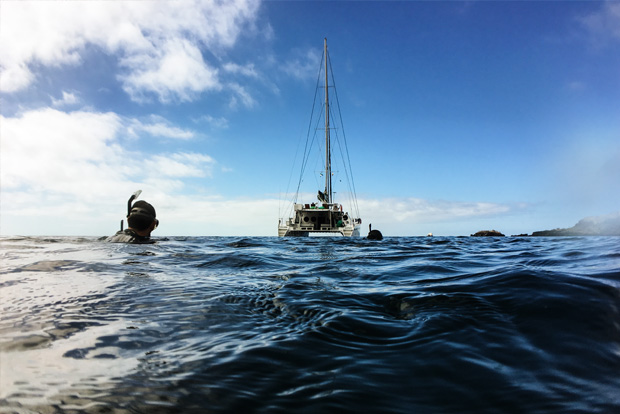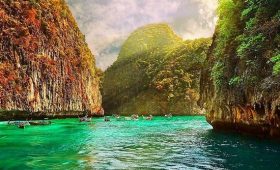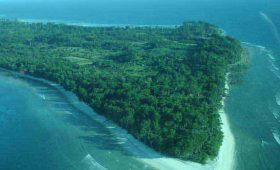Excellent Sicily sea search websites? From April to October, Sicily enjoys one long Mediterranean summer, which means low rainfall, northwesterly breezes, and temperatures hitting 30C (86F) in July and August. It rarely gets hotter at sea. Winds pick up in mid-summer to a regular 10 knots and frequently tail off each evening. Novice sailors should avoid the far windier Straits of Messina between Sicily and mainland Italy. Especially as there’s so much to see in northern Sicily and the Aeolian islands. Sicily has two equally busy airports. Aeroporto di Palermo Falcone e Borsellino is a 30-minute cab ride to Palermo’s marinas via the ritzy seaside resort of Mondello. Aeroporto di Catania–Fontanarossa sits under the shadow of Mount Etna in eastern Sicily, serving the northeastern marinas closest to the Aeolian islands. See extra details at www.sicilyseasearch.it.
Especially popular is the sea area between the northern coast of Sicily, Calabria and the Aeolian Islands. Sicily has an area of 25,426 km² and is the largest island belonging to Italy. It is separated from the Italian mainland by the Strait of Messina. In the north it is bordered by the Tyrrhenian Sea, in the east by the Ionian Sea and in the east and southwest by the Strait of Sicily. Sicily has a largely mountainous landscape, and is the home of Mount Etna – the tallest, largest and most active volcano in Europe. The north and east coasts are made up of high cliffs with numerous bays and sandy beaches. Going south the land is flatter and the beaches become longer. The coastline measures a total length of 1152 km. The capital city of Sicily is Palermo, which lies on a bay on the north coast. The city has many historic attractions, important church buildings, palaces, squares and museums. Other major cities are Catania, Messina and Syracuse.
The beautiful waters of Croatia prove a popular draw for visiting yachts with more than 1,100 miles of coastline, 1,200+ islands and a comprehensive set-up of over 60 marinas. The Adriatic is a gentle sailing destination with a pleasant Mediterranean climate; average sea and air temperatures in the summer range from 24 to 28 degrees Celsius,high tides are usually less than 1m and currents are mild. A favourable breeze blows regularly during summertime and the most common are thermal winds from 10-25 knots that deliver ideal sailing conditions. Additionally, there are plenty of sheltered locations making this a popular spot for family sailing holidays. Croatia offers an endless choice of beautiful anchorages in tranquil coves and bays amidst a backdrop of natural beauty, giving an off-the-beaten-track experience. Charter a sailing yacht in the Kornati Archipelago with 89 islands to explore, where a multitude of picture-perfect bays are sheltered from the wind.
A sailing holiday around France covers some of the most famous Mediterranean beaches and European port towns. The French Riviera is one of the most sought-after yachting destinations in Europe – with many well-known towns, cities, and beaches along this coast. Some of the best destinations here for a cruising holiday include Corsica, Saint-Tropez, Cannes, Nice, Lorient, and many more. These are places that attract the rich and famous – so you can expect plenty of luxuries to be enjoyed in the towns. The French Riviera is one of the most popular destinations in Europe for a sunny sailing holiday. This is thanks to the magnificent beaches, picture-perfect towns, azure waters and calm sailing routes. Thanks to our COVID-19 cancellation insurance, you don’t have to stress whether your travel plans will be affected due to COVID-19. Here are some of the reasons why you should book your Mediterranean yacht cruise in 2021 with IntersailClub: Flexible ReschedulingIf you have to change your travel plans because you cannot get to your departure destination due to COVID-19 travel disruption, you can either: Receive a credit for the deposit paid, which you can use in the next 12 months or Reschedule your charter for alternative dates.
Aside from seasons and events, yachts of the same size may also differ in price and this may be down to a vast difference in on board amenities. A yacht which boasts an on board cinema or lavish water toys may have a higher base rate compared with a yacht of minimal amenities of the same size. If it is unclear as to why two yachts of the same size are vastly different in price, ask your yacht broker to explain what the differences are. Once you are clear on what the base price is and why, it is important to discover what costs will be applicable on top and this is dependent on the type of charter contract used. Under Mediterranean Yacht Brokers Association (MYBA) charter contracts, which are arguably the most common, the charterer is charged for food and beverage (for the charter guests only), fuel, dockage and harbor fees, and miscellaneous expenses. As a round number, which depends on how much fuel the yacht uses and how fancy the meals and drinks, you can expect to add 25% to 50% of your charter cost.
Sailing around Oceania: Just like Europe, Oceania features a huge variety of landscapes that are sure to take any sailor’s breath away. The Whitsundays in Australia is a series of 74 tropical islands nestled in between the coast of Queensland and the Great Barrier Reef. Here, charterers can witness the huge diversity of ocean life that call the reef home, as well as the pristine white sand of the islands themselves. Not too far from these islands, Thailand offers untouched beaches replete swaying palm trees that will invigorate anyone sailing through. It is for these reasons that popular culture has tried to capture the beauty of these locations – the renowned Phi Phi islands have notably featured in a Bond film, while Maya Bay was featured in “The Beach.” Although it might seem like a headache to plan these kinds of monumental trips, it’s actually much simpler than you might think – regardless of where you are in the world or where you want to travel, digital charter platforms like Ahoy Club can help connect you with a yacht owner in minutes.
Yachting tip of the day: After a few honeymoon years, a boat’s fuel gauges, often inaccurate at best, tend to suffer from a high mortality rate. When push comes to shove, you can’t beat an old-fashioned dipstick. Given a sensible allowance for fuel slopping around in the tank at sea, a dipstick is the most reliable measure you’ll get. A threaded hole on top of the tank with a piece of rod welded across the plug so it can be hand-tightened onto a rubber washer makes the ideal access point for the stick. If you can’t arrange this and the filler pipe has a bend, a flexible steel tab like an engine-oil dipstick will usually get you there. You can calibrate the stick in harbor by running the tank almost dry, then topping it right up, marking the stick at every 5 gallons. Nobody did that for your boat’s fuel gauges. If they’re anything like the one on my car, you think there are hundreds of miles left until the needle suddenly hits the stop.
The Azores are a cluster of tiny Portuguese-owned islands located in the Atlantic Ocean. The volcanic islands are known for their lush green vegetation and dramatic lunar-esque landscapes and are perfect for exploring by boat (Horta is a good starting point). Their remote location means they are unspoilt by the tourist masses and if you’re lucky enough you’ll also get to see the odd whale or dolphin along the way.
When the day is over, a broad offer of hotels and accommodations will be waiting for you, from internationally prestigious establishments to good boutique hotels, from beach resorts offering all-inclusive services to cosy rural villas for those looking for a relaxing stay away from tourist spots. The Spanish island of Ibiza boasts some of the most beautiful beaches in the world. Whether you’re into snorkelling in isolated coves, bathing in waters that redefine the word turquoise, or hanging out with celebrities in famous beach bars, there’s something here for everyone. Read on for the ten best beaches on the White Island. Whether you have been to heavenly destinations such as Greek Islands, the French Riviera, and Amalfi Coast before or not, these beautiful sailing spots in the Mediterranean will call you to come back over and over again. So, why not indulge in the opportunity to discover hidden natural gems, new local dishes, traditions, and people each time you visit the Mediterranean? Here are a few useful sailing yacht cruise tips to help you plan your unforgettable summer holiday in Europe’s fanciest location.



